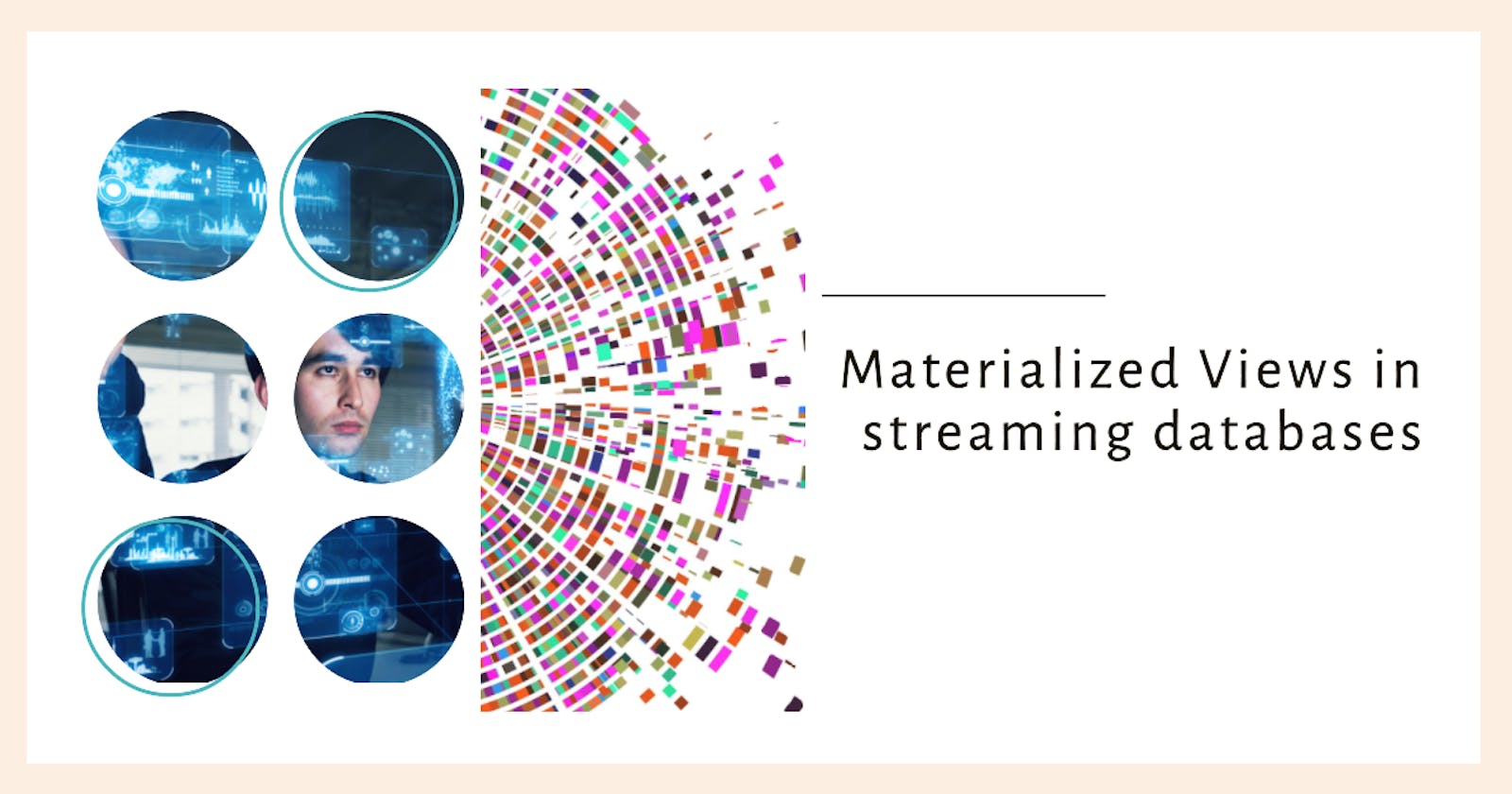Materialized View in Streaming Databases
Materialized view in modern application and Streaming databases
Streaming DataBases are the hottest topic these days as people are shifting to Streaming Databases instead of traditional Databases, Responsible for handling large amounts of data and Real-time data smoothly, do you know how they achieve there are several methods, the Materialized view is one of them, So what Exactly is a Materialized view?
What is Materialized View?
Traditional
It is the precomputed view, those are either already queried or saved view from the data streams, it is done to reduce the complexity and faster the operation by making a separate copy of the Data.
Streaming
In terms of streaming Databases, it can update itself in real time and Ensures the data should be accurate, updated, and ready to use.
Why use Materialized view?
Improves Performance
These are precomputed or saved so the operation and performance are faster
Reduces Load
in microservices, a lot of data coming from different services and leads to increasing the load, having a separate view always helps.
Separate queries and Command
while designing modern cloud application CQRS Pattern(Command and Query Responsibility Segregation) comes in handy as it separates read and update operations in your application.
CQRS stands for Command and Query Responsibility Segregation, a pattern that separates read and update operations for a data store. Implementing CQRS in your application can maximize its performance, scalability, and security. The flexibility created by migrating to CQRS allows a system to better evolve over time and prevents update commands from causing merge conflicts at the domain level.
Rising Wave, Best Choice for Streaming Databases
A streaming Database service that supports inbuilt Materialized Views for your data
With RisingWave, you define the data you need as materialized views. As new data comes in, RisingWave only performs incremental aggregations as the results for previous events have already been calculated, thus reducing the processing time significantly.
To further lower the latency, RisingWave optimized the storage processing logic for complex computations and high-concurrency scenarios. Queries can be processed and results can be delivered with low latency even in these demanding circumstances.
Results of materialized views are stored in RisingWave. You can issue a query to find out the latest result of a materialized view.
What Rising wave can do?
Bonus Read : Sink in Streaming Databases to connect with external Services
RisingWave supports delivering data to downstream systems via its sink connectors.
To stream data out of RisingWave, you must create a sink first. A sink is an external target that you can send data to. Use the
CREATE SINKstatement to create a sink. You need to specify what data to be exported, the format, and the sink parameters.Currently, RisingWave supports two sink connectors:
Kafka sink connector (
connector = 'kafka') With this connector, you can sink data from RisingWave to Kafka topics. For details about the syntax and parameters, see Sink data to Kafka.JDBC sink connector (
connector = 'jdbc') With this connector, you can sink data from RisingWave to JDBC-available databases, such as MySQL or PostgreSQL. When sinking to a database with a JDBC driver, ensure that the corresponding table created in RisingWave has the same schema as the table in the database you are sinking to. For details about the syntax and parameters, see Create a JDBC sink.Check youtube for tutorials and talks: Rising Wave | Youtube
Use case of Materialized View -
Real-time ad performance analysis
RisingWave makes it possible to do real-time ad performance analysis in a low-code manner.
Checkout Rising Wave Blog, How we can use Materialized view to do Real-time analysis of your Ad and its performance:
Real-time ad performance analysis | RisingWave
Designing and Handling data from Microservices -
Handling data from different data sources can be a costly deal for traditional database services too in real-time, Streaming databases can synchronize things and reduce the load.
checkout how-
Querying microservices in real-time with materialized views
https://boburadvocate.hashnode.dev/querying-microservices-in-real-time-with-materialized-views
Thanks for Reading, make sure to check out streaming Databases and Materialized views to better your database performance in real time.
connect me on Linkedin for Updates Swapnil Gupta| Linkedin
